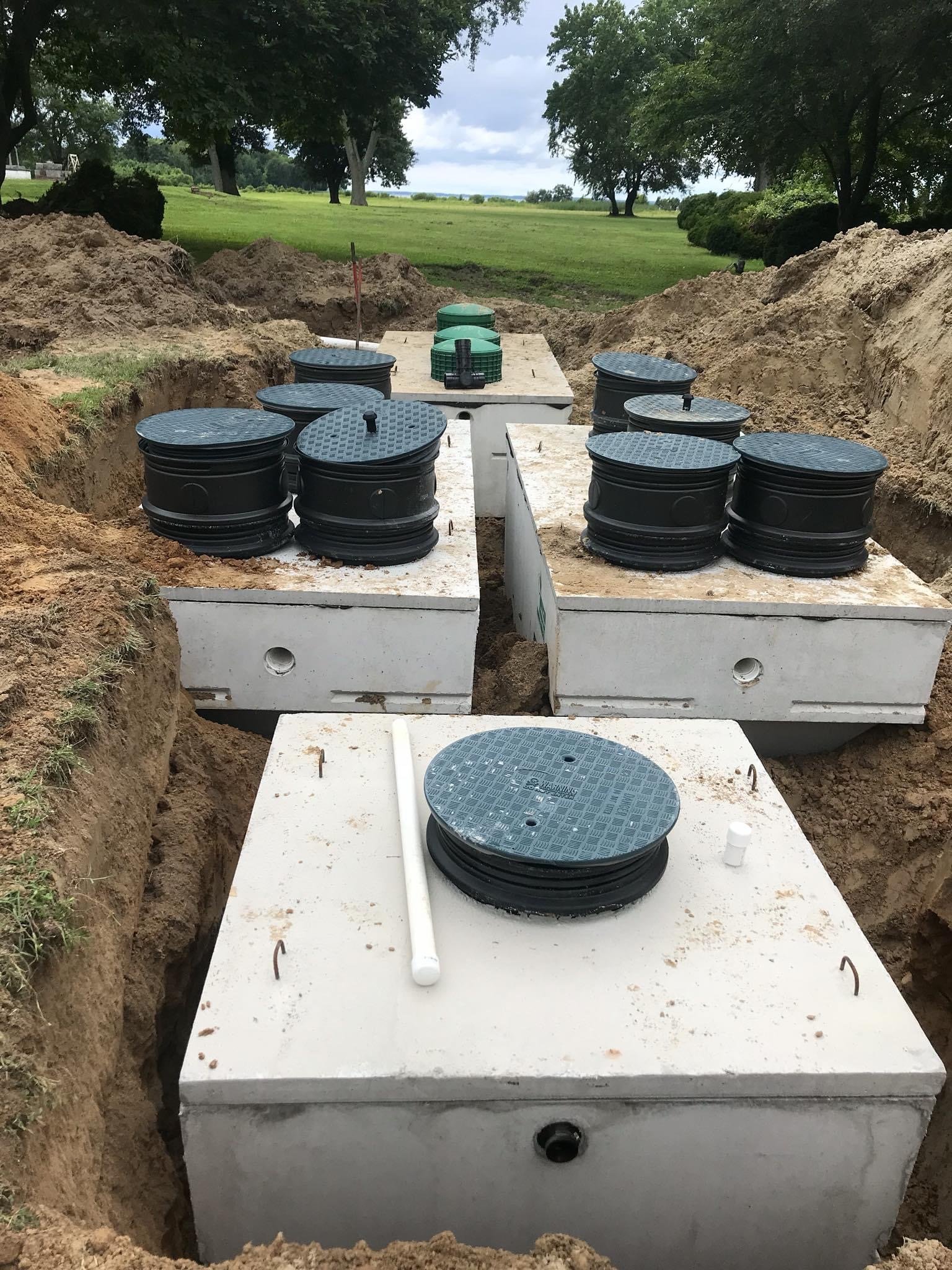Stillwell Septic And Grading Fundamentals Explained
Stillwell Septic And Grading Fundamentals Explained
Blog Article
Everything about Stillwell Septic And Grading
Table of ContentsThe 5-Minute Rule for Stillwell Septic And Grading6 Easy Facts About Stillwell Septic And Grading ExplainedThe Best Strategy To Use For Stillwell Septic And GradingSome Of Stillwell Septic And GradingLittle Known Facts About Stillwell Septic And Grading.Getting My Stillwell Septic And Grading To WorkTop Guidelines Of Stillwell Septic And Grading

House owners should likewise enlighten themselves on the fundamentals of septic tanks to guarantee they make informed choices throughout the installation process - Septic Tank Repairs. Septic systems are a vital part of many homes that are not linked to a municipal sewer system. They are made to treat and take care of home wastewater on-site
The septic tank is a large, below ground container made of concrete, fiberglass, or plastic. The storage tank divides the solid waste from the fluid waste.
10 Simple Techniques For Stillwell Septic And Grading
Along with routine upkeep, property owners should additionally bear in mind what they flush down their drains pipes. Items such as grease, oil, coffee premises, and womanly health items can obstruct the system and create back-ups. It is additionally important to conserve water and prevent straining the system. Easy actions such as repairing leaking faucets and commodes, installing low-flow showerheads and commodes, and expanding laundry loads can aid reduce water usage and extend the life of the septic system.
The topography of the website is likewise reviewed to make sure that the septic system is set up at the proper elevation. https://www.avitop.com/cs/members/stillwellsag.aspx. The system needs to be mounted at a higher elevation than the bordering location to stop contamination of the surrounding environment. Troubles are the minimal distances required by regulation between the septic tank and other structures or features such as wells, buildings, and home lines
The elevations will certainly make sure that the septic system functions effectively, and wastewater is properly treated. It makes certain that the septic system is installed in the most optimum location, taking right into factor to consider the dirt, topography, and setbacks.
What Does Stillwell Septic And Grading Mean?
Prior to setting up a septic system, house owners require to acquire permits and abide with regulations. The laws vary relying on the state, region, and district. For that reason, it is vital to contact the regional health and wellness department or structure division to make sure compliance. Several of the permits and guidelines that homeowners need to take into consideration consist of:: House owners require to get a permit from the neighborhood health and wellness division or structure department before mounting a septic system.
Some towns may call for a minimum whole lot size for septic system installation.: Homeowners need to comply with environmental laws when installing a septic system. https://kruews-sraiosh-qaerr.yolasite.com/. Some states might require an environmental effect assessment prior to mounting a septic system.: Property owners need to conform with construction policies when installing a septic system.
Fascination About Stillwell Septic And Grading
Some communities may require periodic examinations and pumping of the septic container. It is critical for home owners to obtain permits and conform with policies prior to installing a septic system.
One of one of the most important factors to take into consideration when selecting a sewage-disposal tank is the size. A septic system that is too tiny for the home's demands will certainly call for even more constant pumping, while a storage tank that is as well large can lead to excessive water buildup and potential system failure. A general guideline is that the storage tank ought to have the ability to hold a minimum of two days' well worth of wastewater.
Some Known Questions About Stillwell Septic And Grading.

Plastic storage tanks are affordable and lightweight, yet they might not be as sturdy as other materials and can be prone to splitting. It's additionally important to take into consideration the type of system the septic storage tank will be used with. There are 2 main kinds of septic tanks: gravity and stress. Gravity systems depend on the natural circulation of wastewater to relocate via the system, while stress systems utilize a pump to move wastewater with the system.
How Stillwell Septic And Grading can Save You Time, Stress, and Money.
On the whole, picking the best septic tank for a home is an essential decision that needs careful factor to consider. Before mounting a septic storage tank, home owners must take specific actions to prepare for the installment procedure.
Here are some essential safety and security measures to follow: Wear protective equipment: House owners should wear protective gear, such as my explanation handwear covers, boots, and safety helmets, to prevent injury throughout the setup procedure. Prevent electric lines: Homeowners have to prevent digging near electrical lines to stop electrocution. Use care when operating hefty equipment: House owners have to utilize caution when operating heavy machinery to stop crashes and injuries.
What Does Stillwell Septic And Grading Do?
By complying with these crucial actions, property owners can make certain a successful sewage-disposal tank setup process. Septic storage tank installation is an essential procedure that calls for mindful preparation and implementation. House owners who are installing a sewage-disposal tank for the very first time should know the necessary steps involved in the process to guarantee that their septic system operates efficiently and successfully.

Report this page